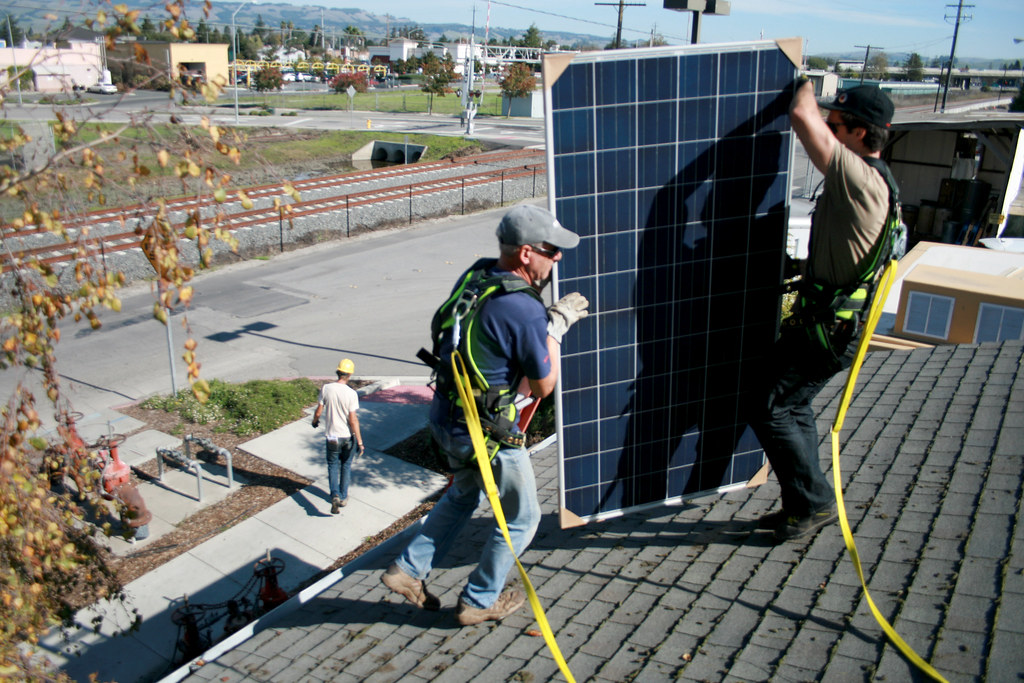去(2016)年,再生能源首次成為全球所有新興電廠的大宗,而美國聯邦能源監管機構資料顯示,去年也是再生能源連續第二年稱霸美國新增發電容量,更加強了這個趨勢。
資料指出,再生能源(包括生質、地熱、水力、太陽能、風力)去年新發電容量總計1萬6124百萬瓦特(MW),比化石燃料和核能總和高61.5%。其實,美國的再生能源佔比一直在增加,2014年就有近半(49.6%)的新增發電容量為再生能源,2015年再生能源更增加1萬2400MW發電容量,是該年度的64.8%。
風力成綠能贏家 太陽能不遑多讓
根據美國聯邦能源管理委員會(Federal Energy Regulatory Commission,FERC)最新一期「能源基礎建設快訊」,去年天然氣新發電容量為8689 MW、核能1270 MW、石油58 MW、煤45 MW。
2016年新增風力發電容量為7865 MW,太陽能也不遑多讓,新增7748 MW。水力新增314 MW,生質新增197 MW。地熱去年則沒有新增。
美國風電協會的高金(Michael Goggin)指出,風力已經成為美國最大的再生能源,「美國風電發電容量現超過82,000 MW,超過水力發電的8萬MW。」
風力現在是美國第四大電力來源,僅次於天然氣、煤和核能,排名在水力和太陽能之前。
再生能源遭低估 川普政策與現況相悖
提倡永續能源的非政府組織Sun Day Campaign執行董事Ken Bossong說,川普政府獨厚化石燃料發展是錯誤的。
「川普政府專注於發展化石燃料不但對環境而言不負責任,就FERC的資料來看,也是完全搞錯方向。時間證明再生能源才是能讓美國再次偉大的能源。」
Bossong補充,發電容量跟實際產電量所有不同。再生能源的每單位額定容量的發電量,也就是容量因數,往往比化石燃料和核能低。根據美國能源資訊管理局(Energy Information Administration,EIA)的資料,2016年再生能源的運作中發電容量占全國19.17%,但實際產電量佔比為15.2%。
Bossong說,這兩項數據都低估了再生能源的貢獻,因為EIA和FERC都沒有計入小規模的、分散的再生能源來源,像是屋頂太陽能板。
儘管如此,再生能源在過去五年間快速發展,在全國發電容量中的比例創下新高,尤其太陽能和風力,兩者容量相加佔總量10.67%,已經高於核能的9%,更是石油3.79%的三倍。
石油、核能減少中 太陽能漲幅大
燃煤佔全美發電量的24.65%。相形之下,石油、核能和燃煤的發電容量過去五年間都在減少。只有天然氣從2011年的41.6%增加到今天的43.23%。
太陽能是美國成長幅度最大的再生能源。其目前2%的市佔是五年前的12倍,2011年只佔0.17%。
此外,太陽能的發展仍在加速。2016年新增發電容量是2015年的兩倍以上,超越了生質和地熱加總。
In 2016, for the second year in a row, the majority of new generating capacity installed in the United States came from renewable energy sources, according to the latest issue of the Federal Energy Regulatory Commission’s monthly “Energy Infrastructure Update.”
The report shows that combined newly installed capacity from renewables – biomass, geothermal, hydropower, solar and wind – totaled 16,124 megawatts (MW), or 61.5 percent, surpassing that from fossil fuels and nuclear power combined.
Last year the newly installed capacity from natural gas was 8,689 MW; from nuclear power, 1,270 MW; oil, 58 MW; and coal, 45 MW.
In 2015, renewable sources added 12,400 MW of new generating capacity, or 64.8 percent of the total installed during that year.
Almost half of all new U.S. capacity, 49.6 percent, came from renewables in 2014.
During calendar year 2016, new wind generating capacity grew by 7,865 MW and was nearly matched by new solar generating capacity, 7,748 MW.
There was also 314 MW of new hydropower capacity and 197 MW of new biomass capacity. No new geothermal steam generating capacity was added last year.
Wind power has blown into first place as America’s largest renewable resource, says Michael Goggin of the American Wind Energy Association, an industry group.
“U.S. wind capacity now stands at over 82,000 megawatts, surpassing the 80,000 MW at the nation’s hydropower dams,” he wrote.
Wind energy is now the country’s fourth-largest source of electric capacity, behind natural gas, coal and nuclear energy but ahead of hydroelectric and solar.
Ken Bossong, executive director of the nonprofit Sun Day Campaign, which advocates a sustainable energy future, warns that the Trump administration is making a mistake by concentrating solely on fossil fuel development.
“The focus of the new Trump Administration on fossil fuels is not only environmentally irresponsible but totally wrong-headed in light of the latest FERC data,” said Bossong. “Year-after-year, renewables are proving themselves to be the energy sources making America great again.”
Bossong points out that generating capacity is not the same as actual power generation. Electrical production per megawatt of available capacity, called the capacity factor, for renewables is often lower than that for fossil fuels and nuclear power, he explains.
The total installed operating generating capacity provided by renewables in 2016 is now 19.17 percent of the nation’s total, while actual electrical generation from renewables in 2016 is roughly 15.2 percent, according to the latest U.S. Energy Information Administration, EIA, figures.
Bossong says both of these figures understate renewables’ actual contribution because neither EIA nor FERC fully accounts for all electricity generated by smaller-scale, distributed renewable energy sources such as rooftop solar.
Even so, the rapid growth of renewables, particularly solar and wind, has captured an ever-growing share of the nation’s total generating capacity.
Each of the non-hydro renewables has grown during the past five years and their combined capacity, 10.67 percent, is now greater than that of nuclear power at nine percent, and nearly three times that of oil at 3.79 percent.
Coal generates 24.65 percent of the nation’s power.
By comparison, the shares of U.S. energy capacity provided by oil, nuclear power, and coal have all declined over the past five years.
Only natural gas has experienced growth – from 41.60 percent in 2011 to 43.23 percent today.
Solar has enjoyed the greatest percentage increase of any U.S. energy source. Solar power’s share of the nation’s generating capacity, 2.0 percent, is now nearly 12 times greater than it was five years ago in December 2011 when it was just 0.17 percent.
And, the growth in solar capacity is accelerating. New solar capacity in 2016 more than doubled that added in 2015 and now exceeds that of biomass and geothermal combined.
※ 全文及圖片詳見:ENS









